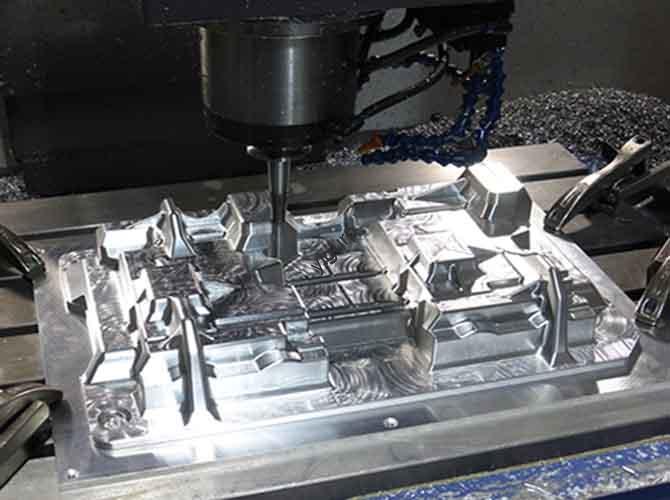Every CNC machinist has faced this problem: parts deform after machining, tools wear out too fast, or the final product can’t stand up to harsh use. La solución? Heat treatment materials. By optimizing material properties before or after Mecanizado CNC, you can fix these pain points and take your production to the next level. Let’s explore how.
1. Why Heat Treatment Materials Matter for CNC Machining
Heat treatment isn’t just an extra step—it’s the foundation of high-quality CNC parts. Here’s how it solves 4 problemas comunes de fabricación:
| Problema resuelto | Cómo ayuda el tratamiento térmico | Ejemplo del mundo real |
|---|---|---|
| Poca resistencia al desgaste | Procesos comotemple aumentar la dureza del material entre un 30% y un 50%, hacer que las piezas duren más. | Un engranaje de acero mecanizado por CNC tratado con enfriamiento dura 2 veces más que uno sin tratar. |
| Deformación/agrietamiento de la pieza | Recocido elimina las tensiones residuales del mecanizado, Mantener piezas dimensionalmente estables. | Una gran placa de aluminio para uso aeroespacial: sin recocido, se deformó 0,5 mm; con recocido, la deformación se redujo a 0,1 mm. |
| Rendimiento de corte difícil | Normalización suaviza materiales duros (P.EJ., acero con alto contenido de carbono), reducir la fuerza de la herramienta mediante 20%. | Mecanizado de un no tratado 4140 barra de acero toma 10 minutos; a normalized one takes 7 minutos. |
| Weak Corrosion Resistance | Nitrurro adds a protective layer to materials, making them resistant to chemicals or saltwater. | A CNC-machined marine bolt treated with nitriding didn’t rust after 6 Meses en el agua de mar (untreated bolts rusted in 1 mes). |
2. Common Heat Treatment Methods for CNC Machining Materials
Not all heat treatments are the same—you need to pick the right one for your material and part. A continuación se encuentran el 3 main categories, with their key details:
2.1 Overall Heat Treatment (For Whole-Part Properties)
These methods treat the entire material, ideal for parts that need uniform strength or flexibility.
| Método | Process Steps | Lo mejor para materiales | Benefit for CNC Machining |
|---|---|---|---|
| Recocido | Heat to 800–950°C → Hold 1–3 hours → Cool slowly (air or furnace). | Aluminio, acero bajo en carbono | Improves cutting speed by 15–20%. |
| Normalización | Heat to 850–1000°C → Hold 1 hour → Cool faster than annealing (still air). | Medium-carbon steel, hierro fundido | Creates finer material structure for smoother CNC cuts. |
| Temple + Templado | 1. Aplacar: Heat to 800–900°C → Cool rapidly (agua/aceite). 2. Temperamento: Reheat to 200–600°C → Cool. | Acero con alto contenido de carbono, acero aleado | Equilibra la dureza (from quenching) y dureza (de templar) for durable parts. |
2.2 Surface Heat Treatment (For Outer-Layer Strength)
Use these when you need a hard surface but a flexible core (P.EJ., engranaje, ejes).
- Induction Heating Quenching: Uses electromagnetic induction to heat the surface (2–5mm deep) in 10–30 seconds, luego apagar. Perfect for high-volume CNC parts (P.EJ., ejes automotrices) because it’s fast and automated.
- Laser Heating Quenching: A high-energy laser scans the surface, heating it to 900–1200°C in milliseconds. Great for precision parts (P.EJ., instrumentos médicos) since it causes almost no deformation.
2.3 Chemical Heat Treatment (For Protective Layers)
These methods add elements (carbón, nitrógeno) to the material’s surface for extra protection.
- Carburador: Heat the part in a carbon-rich medium (850–950 ° C) for 2–8 hours. Carbon penetrates 0.5–2mm deep, making the surface hard (HRC 58–62) while keeping the core soft. Ideal for CNC-machined gears or camshafts.
- Nitrurro: Heat in a nitrogen medium (500–550 ° C) for 10–40 hours. Forma un delgado (0.1–0.5mm) hard layer that resists corrosion. Perfect for parts used in chemical plants or marine equipment.
3. How to Choose the Right Heat Treatment for Your CNC Project
Podrías preguntar: “With so many options, how do I pick?” Follow this 3-step process:
- Define Your Part’s Goal: Do you need wear resistance (P.EJ., herramientas)? Resistencia a la corrosión (P.EJ., partes marinas)? Or easy machining (P.EJ., prototipos)?
- Match the Material: Aluminum works best with annealing; high-carbon steel needs quenching + templado; stainless steel benefits from nitriding.
- Consider Production Speed: For fast turnaround (P.EJ., 1-week prototypes), use induction quenching. For long-lasting parts (P.EJ., maquinaria industrial), choose carburizing or nitriding.
Ejemplo: If you’re CNC-machining a stainless steel valve for a chemical tank (goal: resistencia a la corrosión, material: acero inoxidable, production time: 2 semanas), nitrurro is the right choice.
4. La perspectiva de la tecnología de Yigu
En la tecnología yigu, we’ve helped hundreds of clients optimize CNC production with heat treatment materials. El mayor error que vemos? Skipping heat treatment to save time—only to waste more time fixing deformed parts or replacing tools. We recommend integrating heat treatment early: Por ejemplo, annealing aluminum before CNC machining cuts tool costs by 25%, and nitriding steel after machining boosts part lifespan by 3x. It’s not just a step—it’s an investment in consistent, resultados de alta calidad.
Preguntas frecuentes
- Should I heat treat the material before or after CNC machining?Eso depende: Annealing/normalizing (to improve cutting) funciona mejor antes mecanizado. Quenching/nitriding (to boost hardness/corrosion resistance) is done después mecanizado (to avoid damaging the treated surface).
- Does heat treatment add extra cost to CNC projects?Short-term: Sí (P.EJ., annealing adds $5–$15 per part). Long-term: No—heat treatment reduces tool replacement costs by 30% and cuts rework (from deformation) por 40%, saving money overall.
- ¿Se pueden tratar térmicamente todos los materiales mecanizados por CNC??La mayoría de los aspectos: Acero, aluminio, y el titanio responde bien. Las excepciones incluyen algunos plásticos. (P.EJ., Estampado) y metales blandos (P.EJ., cobre puro)—el tratamiento térmico no mejorará significativamente sus propiedades.
